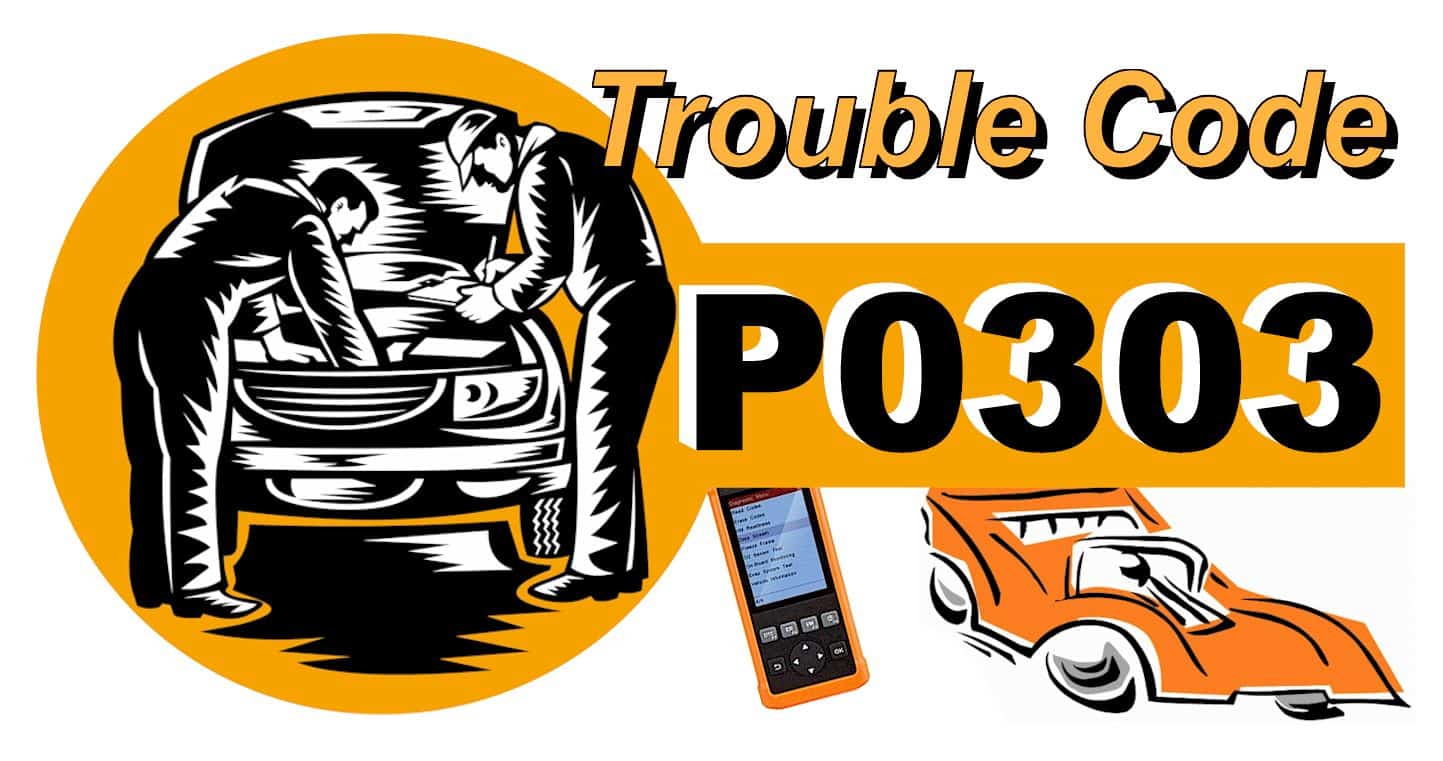Since 1996, most modern cars have been equipped with a misfire detection system. This system is made to send reports to the scanning tool about all possible troubles that can happen with the engine cylinder.
Whenever a misfire (ie: a lack of combustion) happens, the OBD-II (On-board Diagnostics) in your car triggers the Check Engine light. This light will also show a certain number that will indicate what kind of problem you’re facing, and in which cylinder.
So What Does a P0303 Code Mean?
When your OBD-II detects multiple misfires in Cylinder #3, it automatically triggers the Check Engine light and shows you the code P0303. This light will remain until you resolve this problem.
In order for your engine to work efficiently, the combustion of your fuel will provide the power your engine needs to start. These misfires happen when there’s not enough amount of fuel burning in that cylinder.
Mostly, misfires can be due to a faulty ignition system, poor fuel quality, low compression, or internal engine failure. Consequently, P0303 is a damage that should be fixed as soon as possible, since it can
What Are Some Common Symptoms of P0303?
There are some symptoms you’ll probably encounter when you face a P0303 code. But, keep in mind that not all these symptoms have to happen with a P0303 code. Some drivers will face a Check Engine light only, while others may face all or some of the following:
- Check Engine light is on or flashing
- Choppy acceleration (Jerkings and hesitations)
- The engine is harder to start
- Smell of fuel from the exhaust
- The engine stumbles a lot.
What Are The Likely Causes of a P0303 Code?
- Faulty or worn spark plugs
- Faulty spark plug wires or coils
- Exhaust Gas Recirculation (EGR) valve leak.
- Distributor failure
- Defective computer
- Vacuum leak
Other Troubleshooting Codes about Cylinder-Misfire
https://curateview.com/p0302-code/
https://curateview.com/p0301-code/
How To Diagnose The Actual Problem?
The problem with P0303 is that it can be caused by multiple parts of your car. This can be tricky when you’re trying to diagnose your problem and figure out what exactly to fix. That’s exactly why misdiagnosis is significantly common with this code.
In order to avoid that, a smart mechanic is recommended to know exactly where to look and what to fix. This can help you save both time and money.
Here’s what you need to do to diagnose a P0303 code:
Use a DTC Scan Tool
The first thing you or your mechanic need to do is to use a DTC scan tool to figure out if there are other pending codes. If other codes are found, they must be addressed first.
Inspection, Inspection, Inspection
Take a look at your car engine. Check if there are
Also, you need to thoroughly check your spark plugs and spark plug wires. However, if your car is provided with individual coil packs instead of spark plug wires, this will facilitate your diagnosis process.
It’s recommended to remove the cylinder 3 coil and swap it with cylinder 4 coil. If the misfire moved to cylinder 4 now, then you know you have a problem
However, if you’re sure that your ignition system is all clear, you can start inspecting your fuel system. Make sure your fuel pressure is high enough to provide enough energy for your engine to work efficiently.
Once you’re sure that your ignition system and your fuel system are properly working, check if there are any mechanical problems
Repair, Replace and Reset
After you’ve detected all the damaged parts of your system, make sure you’ve repaired all the damage and replaced all dysfunctional parts.
Once you’re done, mount your DTC Scan Tool again and note all stored codes and freeze frame data. This is important when you’re diagnosing intermittent conditions.
Now, you can perform the test drive and check if the code comes back.
Your Car is Now Good To Go!
This sums up our guide to handling the P0303 code properly. You no longer have to fear the confusing code.
All you have to do is get your DTC scan tool, inspect your car systems properly for any loose connections, worn-out wirings, low fuel pressure or internal engine damage. Repair your damaged parts and reset your systems. And say goodbye to the nerve-wracking Check Engine light!
We still advise against trying to fix the problem on your own. A smart mechanic is needed to get this job done as smoothly and efficiently as possible without overlooking a potential cause.
James is a certified auto technician specializing in commercial vehicles. With 30 years of experience under his belt, James has encountered almost every type of automotive issue there is! Besides his day job at the repair shop, he is also an amateur race car driver.


I’m going to ask for a DTC scan tool for my birthday! My cars seem to always have so many issues and I want to know what’s going on. Knowledge is power.
Everyone should have this scanner. I swear, it would save folks a lot of money. Also, mechanics wouldn’t feel the need to lie and rip people off.